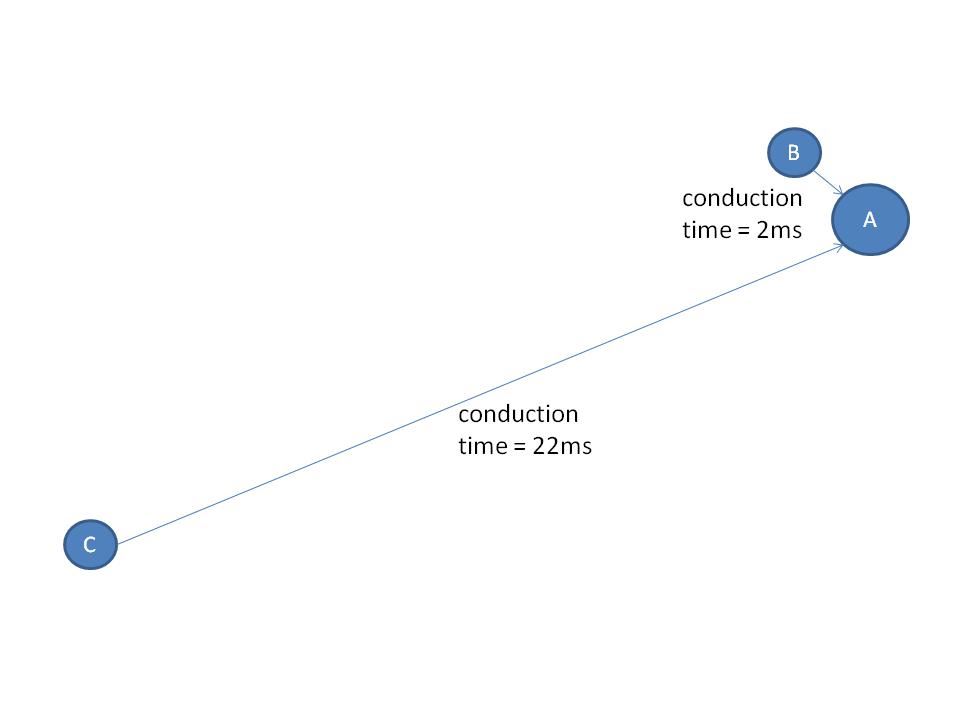
Synchronicity has to be understood in terms of synchronicity of the arrival of action potentials to a target neuron rather than absolute equality of action potential conduction times over different paths. Consider the following example: suppose neuron A is receiving excitatory input from neurons B and C via two different pathways (neuron A is the target neuron for both neurons B and C). Suppose that the action potential conduction time is 2ms from neuron B to neuron A and 22ms from neuron C to neuron A (i.e., the axonal pathway B-A has a significantly shorter conduction time than the axonal pathway C-A). Does it mean that the connections B-A and C-A are always asynchronous? No. The answer depends on the predominant neural activity rhythm in this network. At the firing rate of 50Hz (inter-spike interval of 20ms that correspond to Gamma rhythm), neurons B and C can actually be considered synchronous in relationship to neuron A: consider a train of action potentials synchronously fired by neurons B and C. The first action potential from neuron B will reach neuron A in 2ms and the first action potential from neuron C will reach neuron A in 22ms. Obviously, there would be no coincidence in the arrival times of the 1st action potentials from neurons B and C. However the second action potential from neuron B will arrive to neuron A in 22ms, concurrently with the 1st action potential from neuron C. Thus, starting with the second action potential, neuron A will receive synchronous activation from neurons B and C. The synchronous activation has a significantly greater probability of enhancing synaptic connections between neurons A and B, and A and C (Hebbian learning: ‘neurons that fire together, wire together’ (